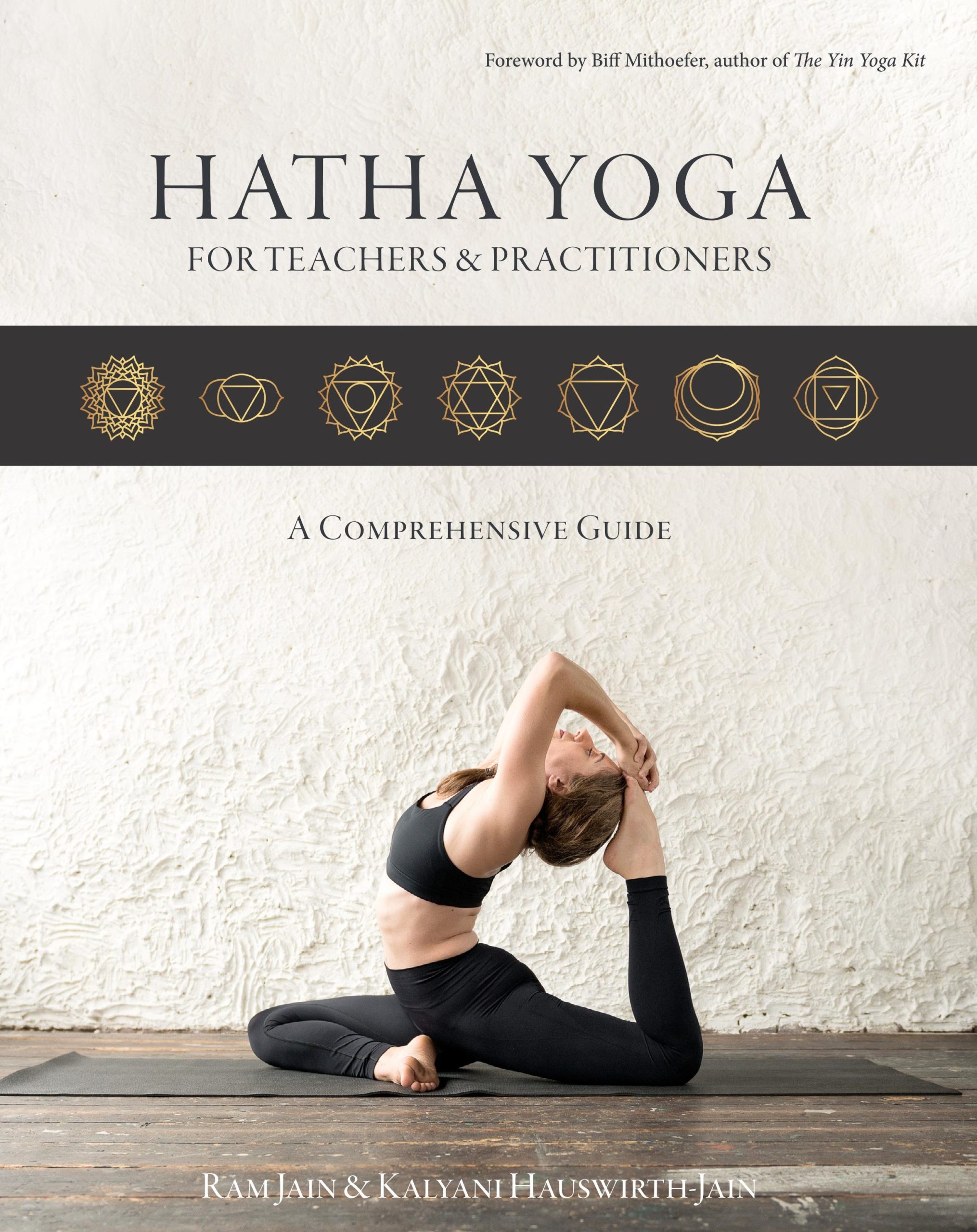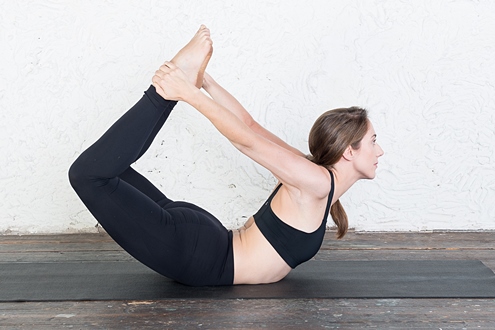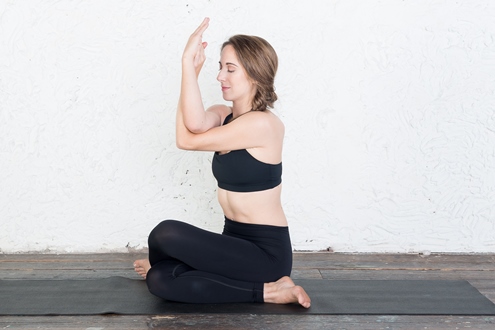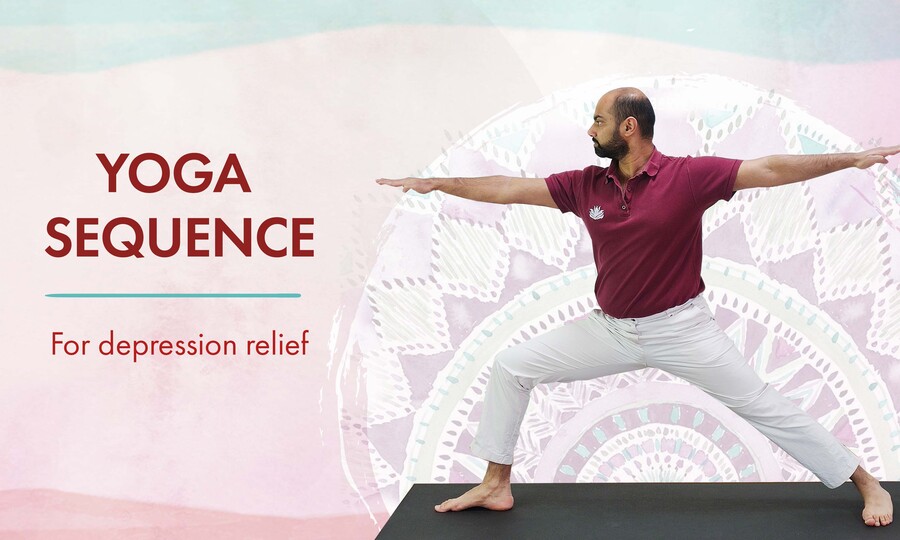What is Depression?
Depression is a far more common condition than we think. If you are teaching yoga, the chances are high that one in every fifteen students suffers from it. Understanding more about this common condition, and understanding how to teach yoga for depression can help you assist your students on their path to recovery.
Depression is a medical disorder that causes persistent feelings of hopelessness, worthlessness, and disinterest in daily activities. It can result in significant emotional and physical problems. The person suffering from it can experience guilt and self-pity. It can develop due to personal or professional disappointments. These can be due to sudden or long term factors. This is different from being stressed or worried about changing circumstances.
The coping mechanism of each individual is different. Some people recover more easily from serious emotional damage. When a person suffers from depression, the inability to manage negative thoughts and suicidal thoughts are common symptoms.
Other symptoms of depression are
- Loss of interest in activities that you once used to enjoy
- Insomnia or sleeping too much
- Fatigue and general loss of vitality and energy
- Difficulty to make simple decisions or focus on tasks
- Distrust in other people
- A feeling of worthlessness & hopelessness
- A feeling of guilt or shame
Several factors can be responsible for depression
- Biochemistry: Differences in neuro-hormonal chemicals in the brain may contribute to symptoms of depression.
- Genetics: Depression can be hereditary. If a direct family member suffers from depression the risk that you’ll develop it sometime in life is increased by 50-70%.
- Personality: People with low self-esteem who may be vulnerable to stressful circumstances are more likely to experience symptoms of depression.
- Environmental factors: Continuous exposure to violence, neglect, physical or mental abuse may be more susceptible to depression.
Lifestyle factors that increase the condition of depression
Our complex modern lifestyle has made it necessary to multi-task. The office work, family responsibilities, and personal indulgences - all require attention. Prioritizing has become difficult. An unorganized life leads to erratic eating habits and sleeplessness. This causes an imbalance in the energy centers of the body and mind. The heart rate and blood pressure constantly fluctuate under pressure. Dissatisfaction from relationships increases. Slowly the loss of mental peace with a feeling of purposeless life pervades for a long time. When a person is unable to recover from a setback, it damages the mental health.
The severity of depression depends on recurring episodes. Each time we experience an episode of intense negative thoughts, the impact of it on our overall health and self-image grows. To recover from such episodes, the mind needs to refocus and regain control. Medicines may regulate the behavior and habits to some degree. But discipline is required to develop positive habits and remove the obstruction to emotional recovery. Yoga has been shown to be an effective method that balances the nervous system and rejuvenates the body and mind.
Teaching Yoga for Depression
Depression is one of the fastest-growing medical concerns worldwide. The World Health Organization (WHO) has recorded an estimate of 264 million people of all ages suffering from depression globally. Women are more prone to be affected by it than men. At its worst, it can lead to suicide. It is the second major cause of death among 15 to 29-year-olds. [8]
There are different treatments available to suppress the conditions of depression. Therapy and counseling help a patient in resolving some underlying issues. The dosage of medicines results in controlling the neuro-hormones of the brain to some extent. The need for an alternative treatment has directed the attention of medical practitioners towards yoga.
Many studies and clinical trials found yoga to be an effective practice for curing depression. The balance of body and mind can be achieved through the regular practice of yoga. The combination of yoga and meditation along with psychological counseling develops strength in the body and neutralizes the chemicals of the brain.
Students might benefit from joining your regular open classes or some of them might prefer personal sessions. In both cases, it's important to keep some guidelines in mind, to ensure that students feel safe in your yoga class.
Read more: 8 Tips to Make Your Students Feel Safe

Get a free copy of our Amazon bestselling book directly into your inbox!
Learn how to practice, modify and sequence 250+ yoga postures according to ancient Hatha Yoga principles.
Neurological Benefits of Yoga
Neurotransmitters play a vital role in modifying behavior and mood swings. One relevant neurotransmitter is gamma-aminobutyric acid (GABA). It plays a major role in reducing neuronal excitability through the nervous system. Stress and depression are often linked to low GABA levels. A study conducted in 2007, showed that yoga practitioners experienced an average raise of 27% in their GABA levels during 55 minutes of asana practice. And the control group, that conducted other relaxed activity showed no increase. A follow-up study, published in 2010, showed that even beginning yoga practitioners experienced major rises in the GABA neurotransmitter, along with improved mood and less anxiety.
Yoga and the nervous system
A balanced nervous system requires continuous maintenance. The biological state of balance is called homeostasis. The complete awareness of energy centers makes it easier to regulate the nervous system. In a challenging situation when the brain waves are activated, a healthy body can restore the homeostasis with ease. Sometimes a deep psychological impact requires extra support to bring the energy to normalcy.
The two branches of the autonomic nervous system, SNS and PSNS, manage the homeostasis simultaneously. The sympathetic nervous system (SNS) is stimulated when encountering any risk. The Parasympathetic Nervous System (PSNS) has a relaxing and calming effect on the entire body and brain.
Apart from external and psychological factors, the sympathetic nervous system also gets activated by using your muscles or breathing more heavily. More vigorous and dynamic yoga asana styles will trigger your sympathetic nervous system. Comfortable exercises as well as slow and conscious breathing, on the other hand, will engage your parasympathetic nervous system.
We all know that stress is unhealthy. It triggers the sympathetic nervous system, which then creates more stress. This stress-induced cycle causes the most common chronic diseases. After all, when your sympathetic nervous system is active, your body is in survival mode. Your heart rate increases, the blood supply to your internal organs is cut and redirected to your major muscles, and your respiration becomes quick and shallow. At the same time, the stress hormone cortisol floods our bloodstream. Over time, this can lead to various vascular disorders such as hypertension and a
depressed immune system.
In a scientific study, the intervention of Hatha Yoga was found to have therapeutic effects on the participants. The physical movements of yoga, the encouragement of a mindful approach, breathing techniques, and the final resting pose was applied. This pattern of yoga practice triggered mood effects. Different yoga elements were also considered to reduce the severity of depression.
An effective yoga practice involves poses and exercises that cycle through the accelerator and the brake so the autonomic nervous system gets a thorough workout. This is why a true Hatha Yoga practice does three things. First, it often challenges the body in order to warm up or in order to learn different postures and exercises and therefore activates the sympathetic nervous system. Second, it always includes elements that bring your body and mind back into a parasympathetic state. Third, it develops an awareness between the contrasting states of relaxation and excitement. Through understanding this, you increase your capability to shift from one state to the other in your daily life as well. Therefore Hatha Yoga helps to prevent an imbalance between the sympathetic and parasympathetic systems. As you realize your energetic flexibility, you develop abilities to achieve states of inner balance and harmony as well as improved health for your entire body.


Yoga and diet
The effects of depression on the body are visible because of changes in food habits. When the mind feels overwhelmed by negative thoughts then there is either loss of appetite or overeating. The result is devastating to the body.
The daily practice of yoga maintains healthy metabolism. Some yoga styles induce sweat that increases appetite. Healthy food works as a fuel for the body. The body starts receiving the necessary nutrients and oxygen. The lost energy due to depression is restored. Staying hydrated becomes a natural habit due to physical movement. Water and healthy drinks like coconut water rejuvenate the skin cells.
While increasing flexibility, yoga also aids in balancing the metabolism. Yoga practitioners find it easier to develop mindful eating habits, as they become more sensitive to hunger cues. There is more feeling of fullness and satisfaction. The practice of yoga balances the energy centers of the body. Yoga exercises that focus on the core or abdomen stimulate digestion. The combination of healthy foods and yoga creates discipline to maintain proper health. When the physical strength revives, it becomes easy to manage emotions. The symptoms of depression are replaced by acknowledging gratitude towards the present life.
Yoga and sleep
Every aspect of life is disturbed due to depression. One of the adverse effects is sleeplessness. The mind experiences fatigue in a depressive mood. There is less interest in maintaining a disciplined life. The neurotransmitters - serotonin, dopamine, and norepinephrine are imbalanced. This disrupts the REM (a state of deep sleep) cycle. The longer the depressive stage, the higher the chances of insomnia.
Several studies have shown that, when people who experience insomnia practice yoga on a daily basis, they sleep for longer, fall asleep faster, and return to sleep more quickly if they wake up in the middle of the night.
The regular practice of yoga has multiple benefits including relaxing the mind. Yoga poses help in controlling breath, mind, and actions. The gentle movements in yoga that align the energies of the body. The meditation techniques in yoga have a calming effect. Deep breathing exercises help focus the mind from external factors to inner awareness. A complete 6 to 8-hour sleep automatically activates the brain in the morning. This restores the natural sleep-wake rhythm of the body.
Yoga Asanas and Breathing Exercises for Depression
Breathing exercises
Deep breathing exercises stimulate the nervous system that connects the brain to the body. Through this connection, our moods either experience optimistic thoughts or depression. While practicing deep breathing, the brain sends signals to the nerve to release the pressure. Simple breathing exercises can have a huge impact on our overall health and wellbeing. The few benefits of yogic breathing exercises are:
- Improved cardiovascular health (reduced risk of hypertension)
- Improved lung function
- Detoxification
- Improved immune system
- Improved mental balance
Read more: 3 Yogic Breathing Exercises to Calm Down
Yoga postures for depression
Yoga improves blood circulation and oxygen flow throughout the body. The light stretches of yoga increases flexibility. Yoga asanas develop balanced coordination of body and mind. The entire neurological and nervous system receives a gentle but effective 'work-out' by the practice of Hatha Yoga.
Find below a 45 minutes Hatha Yoga sequence with breathing exercises and asanas that are very suited to assist in the management of depression:
- Anulom Vilom | Alternate Nostril Breathing: This breathing technique brings the nervous system into a calm state (parasympathetic) and balances the right and left hemispheres of the brain.
- Brahmari | Bumble Bee: This breathing exercise helps to calm down the senses and therefore the mind. Through the slow-paced inhalation and exhalation, the nervous system comes into the relax and rejuvenate activation (parasympathetic).
- Shavasana | Corpse Pose
- Surya Namaskara | Sun Salutation
- Shashankasana |Child's Pose - Balasana is a gentle exercise that stretches the lower back and hips. Being a comfortable yoga pose, Balasana calms the brain and brings about a feeling of calmness and relaxation.
- Sarvangasana | Shoulderstand
- Ardha Setu Bandhasana | Half Bridge Pose
- Sidana Garudasana | Seated Eagle Pose
- Baddha Konasana | Bound Angle Pose (Butterfly)
- Bhujangasana | Classical Cobra Pose
- Dhanurasana
- Malasana | Yogic Squat
- Uttanasana | Standing Forward Bend
- Virabadhrasana II | Warrior II
- Vrkshasana | Tree Pose
- Final Relaxation
Conclusion
Life is unpredictable. The challenges may sometimes defeat our positive spirit causing depression. The complex neurons of the brain are difficult to manage but not impossible. Yoga and various breathing techniques are very effective methods to support the treatment of depression. Yoga supports the efforts of medicines and therapy during the treatment of depression, as it calms the agitated mind and regulates the nervous system.
Resources:
https://pubmed.ncbi.nlm.nih.gov/22365651/
https://pubmed.ncbi.nlm.nih.gov/19482233/
https://www.ncbi.nlm.nih.gov/pmc/articles/PMC4769029/
https://www.ncbi.nlm.nih.gov/pmc/articles/PMC3768221/
https://www.ncbi.nlm.nih.gov/pmc/articles/PMC5354384/
https://www.psychiatry.org/patients-families/depression/what-is-depression
https://www.sleepfoundation.org/articles/connection-between-yoga-and-better-sleep

Get a free copy of our Amazon bestselling book directly into your inbox!
Learn how to practice, modify and sequence 250+ yoga postures according to ancient Hatha Yoga principles.

